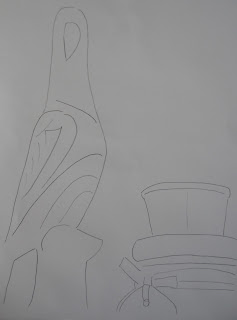I feel like what Clements and Wachawiak have stated is a good measure on what is art in education and what is a craft. That being said, what is the difference between the to and do they go hand
-in-hand?
Referring to answers.com, a craft is an application of a technique. Crafts commonly result in a useful object. I know all the crafts I've made were useful as a decoration. So that would make art "the use of skill and imagination in the creation of aesthetic objects, environments, or experience that can be shared with others--rather than what it is"according to Britannica Online.
I feel as though crafts are more of a semblance of materials and art is more of a creation though use of materials.
To bring it back to fulfilling art education as Clements and Wachawiak define, I feel as though it is more important to have art, rather than a craft in the elementary curriculum. Sure, the application of techniques can prove to most vital to a child. If anything a craft teaches proper craftsmanship which will help a student to succeed in their masterpieces to come. But teaching art and the different art genes we have today is too valuable not be a part of curriculum. To refer to my favorite authors Clements and Wachawiak, art provides: cultural understanding, national needs, making the ordinary important and special, personal communication and expression, a different way of learning and communicating in school...just to name a few of there vital functions. A craft just cannot provide the depth that an art piece can. Crafts do have there time and place. Crafts can even aid in the development of art. But art trumps a craft when it comes down to curriculum.











